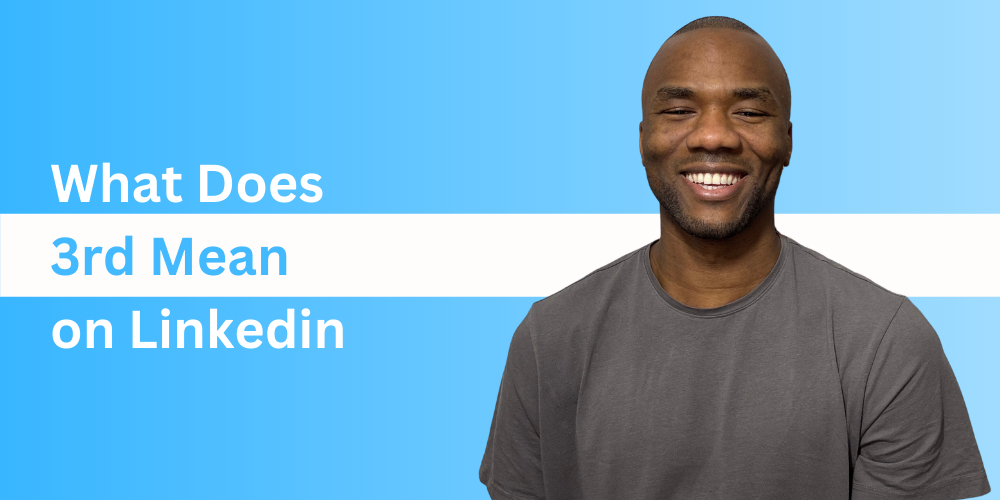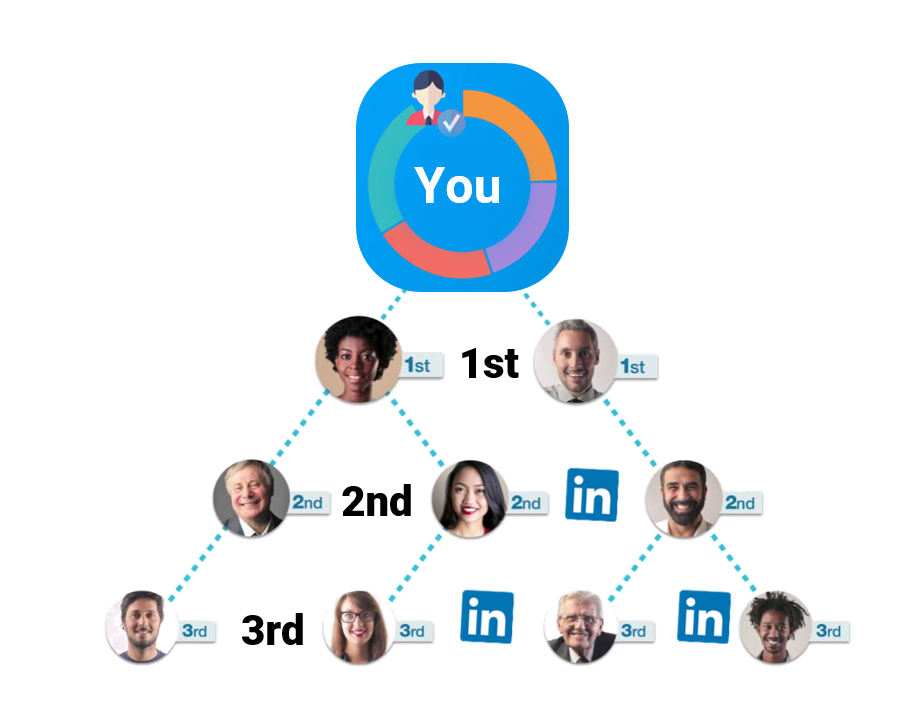What Does 3rd Mean on Linkedin
Wondering what 1st, 2nd, and 3rd mean on LinkedIn? These degrees show how closely you’re connected to others—1st is direct, 2nd is mutual connections, and 3rd is two steps away.

These terms refer to the degrees of connection between you and other LinkedIn members.
Understanding these degrees is key to building and leveraging your network effectively.
What Do 1st, 2nd, and 3rd Mean on LinkedIn?
LinkedIn uses a system of degrees to describe the relationship between you and other users on the platform. These degrees indicate how closely connected you are to someone and determine how you can interact with them. Here’s what each degree means:

1st-Degree Connections
- Definition: These are people you’re directly connected to on LinkedIn. You’ve either sent them a connection request, or they’ve sent one to you, and it’s been accepted.
- Visibility: You can see their full profile, send them messages, and interact with their posts.
- Example: Colleagues, friends, or industry peers you’ve connected with.
2nd-Degree Connections
- Definition: These are people connected to your 1st-degree connections. You’re not directly connected to them, but you share mutual connections.
- Visibility: You can see limited profile information unless they have a public profile. You can send them a connection request or an InMail (if you have Premium).
- Example: A colleague of your coworker or someone in your industry who knows people you know.
Supercharge Your Lead Generation
Automate your outreach effortlessly with Linkedly.
Try Linkedly for Free3rd-Degree Connections
- Definition: These are people connected to your 2nd-degree connections. They’re two steps removed from your network.
- Visibility: You can see even less profile information unless their profile is public. You can send them a connection request or an InMail (with Premium).
- Example: Someone in your industry who knows people your connections know.
Why Do These Degrees Matter?
Understanding your degrees of connection is important because it impacts:
- Networking Opportunities:
- 1st-degree connections are your closest network and easiest to interact with.
- 2nd and 3rd-degree connections expand your reach and help you tap into new opportunities.
- Visibility and Access:
- The closer the connection, the more profile information you can see.
- 2nd and 3rd-degree connections may require Premium features (like InMail) to contact directly.
- Job Searching and Recruiting:
- Recruiters often look for 2nd and 3rd-degree connections to find candidates through mutual contacts.
- Job seekers can use these connections to get introductions or referrals.
How to Use 1st, 2nd, and 3rd Connections Effectively
1. Build Your 1st-Degree Network
- Connect with colleagues, classmates, and industry peers.
- Personalize connection requests to increase acceptance rates.
2. Leverage 2nd-Degree Connections
- Ask your 1st-degree connections for introductions to their contacts.
- Use mutual connections to build trust and credibility.
3. Expand with 3rd-Degree Connections
- Join LinkedIn groups or participate in discussions to connect with people outside your immediate network.
- Use LinkedIn’s “People You May Know” feature to find and connect with 3rd-degree connections.
What Does “3rd+” Mean on LinkedIn?
Sometimes, you’ll see the term “3rd+” on LinkedIn. This refers to connections who are 3rd-degree or beyond, meaning they are two or more steps removed from your network. These connections are part of LinkedIn’s extended network, and interacting with them may require Premium features like InMail or Open Profile.
How to Check Your Connection Degrees
To see the degree of connection between you and another LinkedIn member:
- Visit their profile.
- Look below their name and headline. You’ll see 1st, 2nd, or 3rd+ indicated.
- If you’re not connected, LinkedIn may also show mutual connections.
Tips for Networking on LinkedIn
- Personalize Connection Requests:
Always include a brief message explaining why you want to connect. - Engage with Your Network:
Like, comment, and share posts from your connections to stay visible. - Use LinkedIn Premium:
If you’re actively networking or job hunting, Premium features like InMail can help you reach 2nd and 3rd-degree connections. - Join Groups and Participate:
Engage in LinkedIn groups to expand your network and connect with like-minded professionals.
Conclusion
Understanding what 1st, 2nd, and 3rd mean on LinkedIn is essential for building and leveraging your professional network.
Your 1st-degree connections are your core network, while 2nd and 3rd-degree connections offer opportunities to expand your reach and tap into new opportunities.
By using these degrees strategically, you can enhance your networking, job searching, and career growth on LinkedIn.
Supercharge Your Lead Generation
Automate your outreach effortlessly with Linkedly.
Try Linkedly for Free